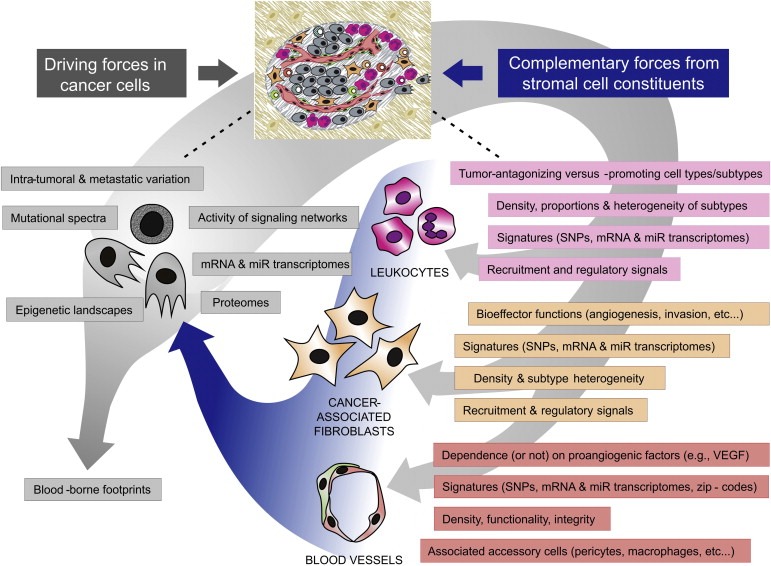Figure 1.

Dimensions and key parameters of personalized cancer biology. The complexity and variability of cancer should be interrogated in individual patients. Heterogeneity of both cancer cells (left) and stromal cells (right) can be audited through molecular analysis (including genomics, epigenomics and transcriptomics); immunohistochemistry and flow cytometry; noninvasive imaging; and examination of re‐biopsy specimens obtained from both primary/metastatic tumors and tumor cell exfoliates, before and during treatment, as well as upon treatment failure. The constituent types, relative abundance and dynamics of cancer‐associated leukocytes and fibroblasts (CAFs) should be determined before, during and after treatment; stromal cell signatures may be predictive of patient's prognosis and represent biomarkers of tumor response to therapy. Molecular analysis of whole tumor tissue should be extended to fractionated cancer‐associated stromal cells, including tumor‐derived endothelial cells; molecular signatures comprising single nucleotide polymorphisms (SNPs) and mRNA/miR transcriptomes may be predictive of patient's response to therapy (e.g., antiangiogenic drugs), and thereby provide an encyclopedia of potential new targets of therapy.
